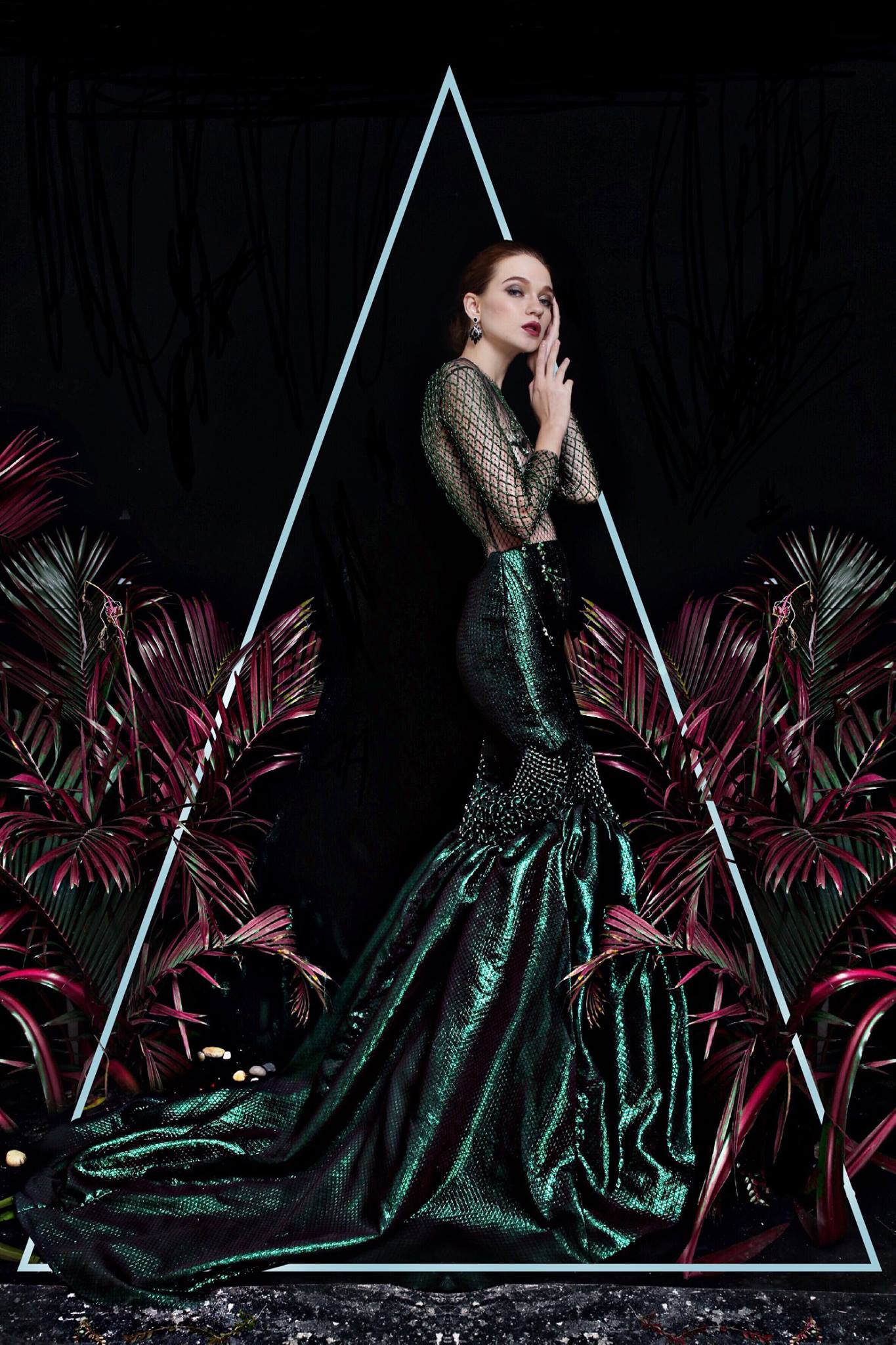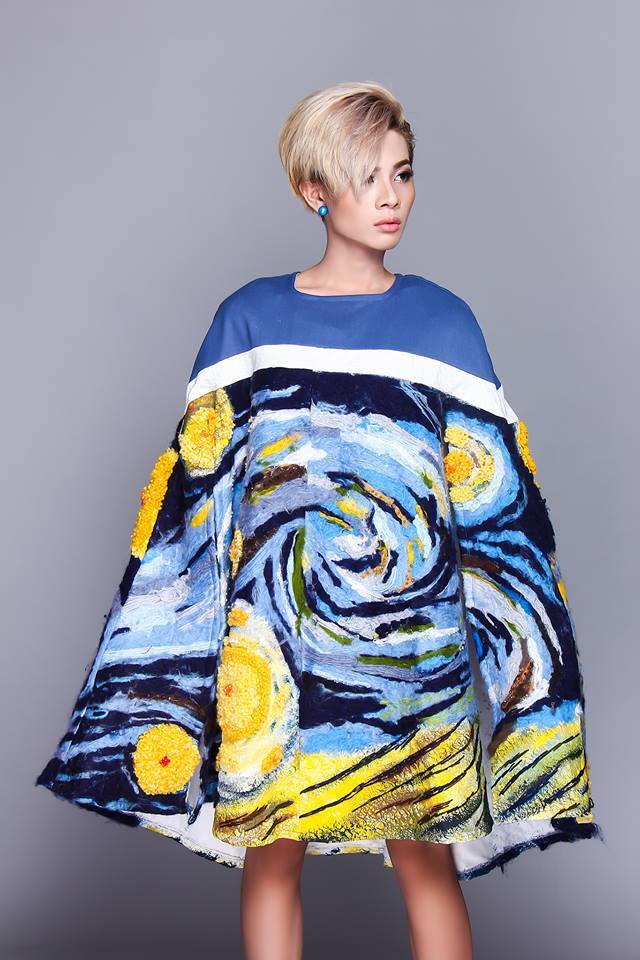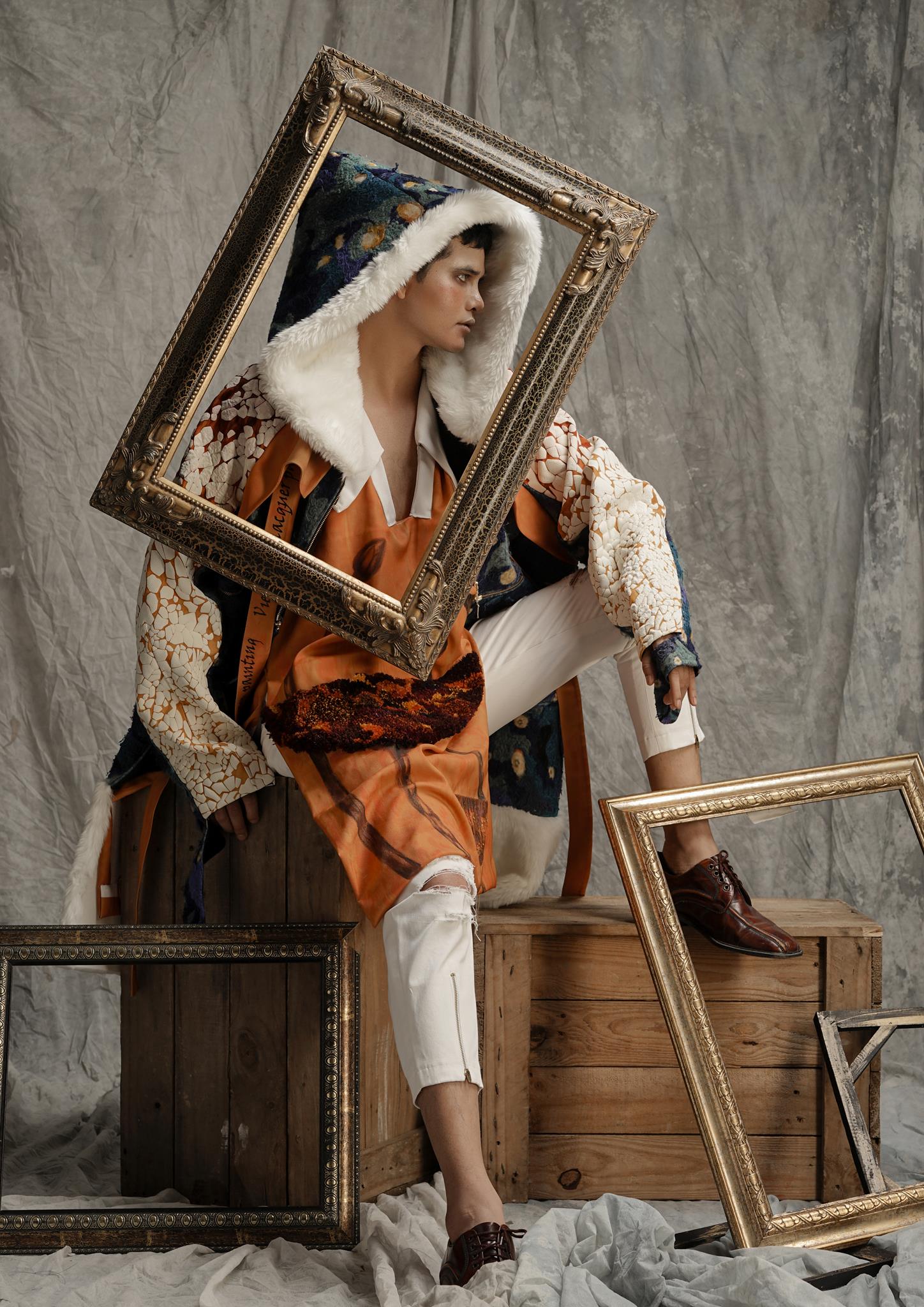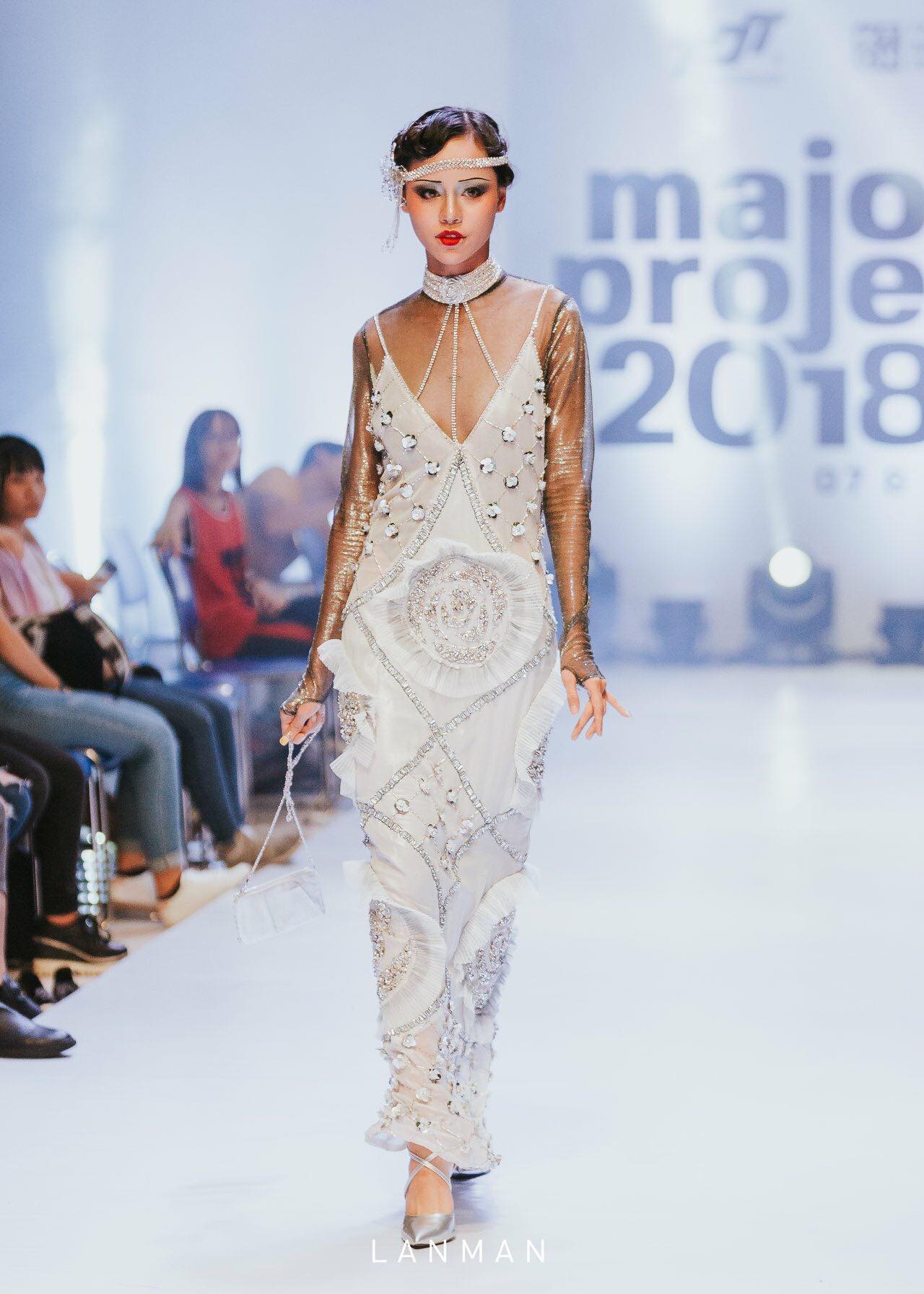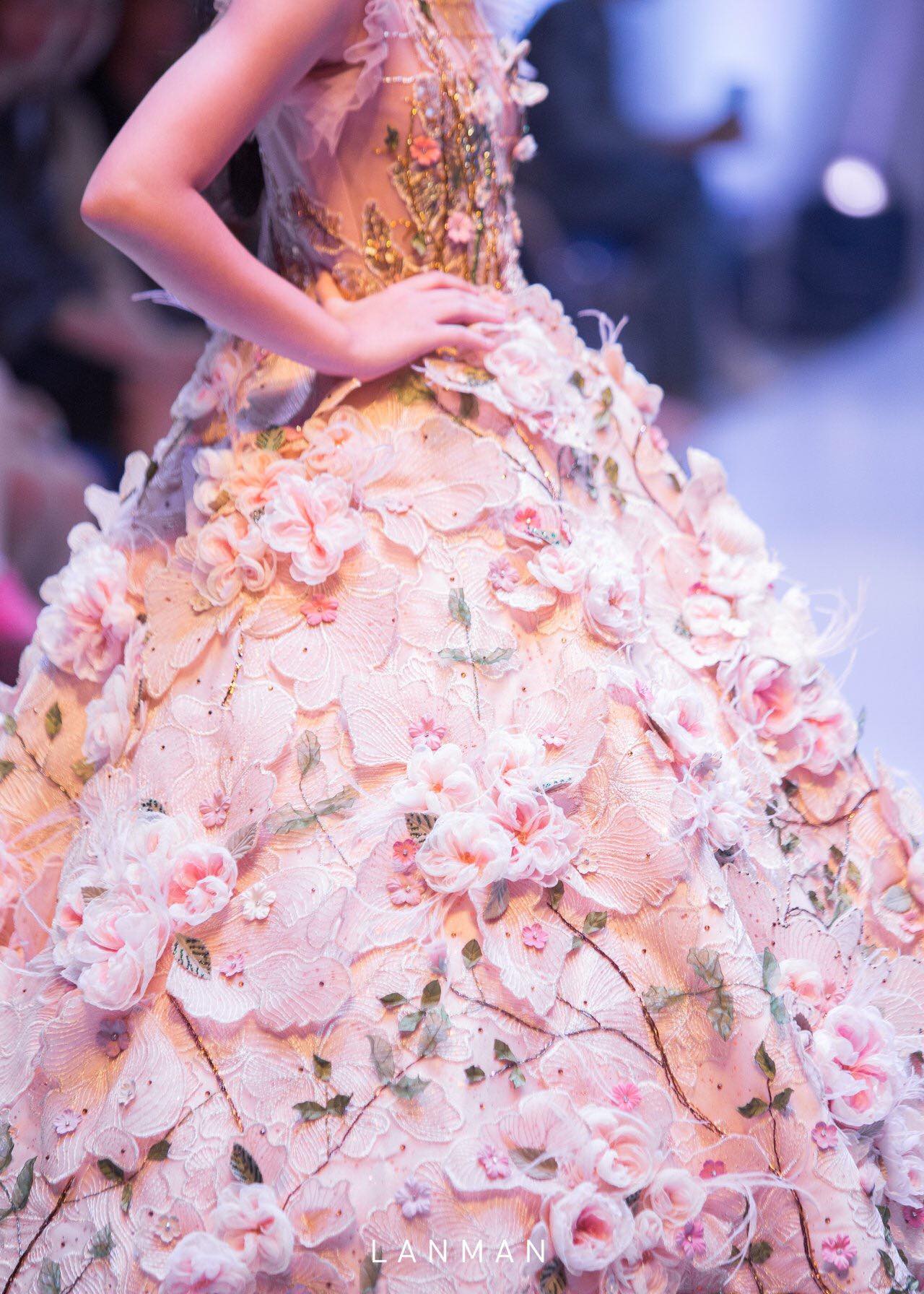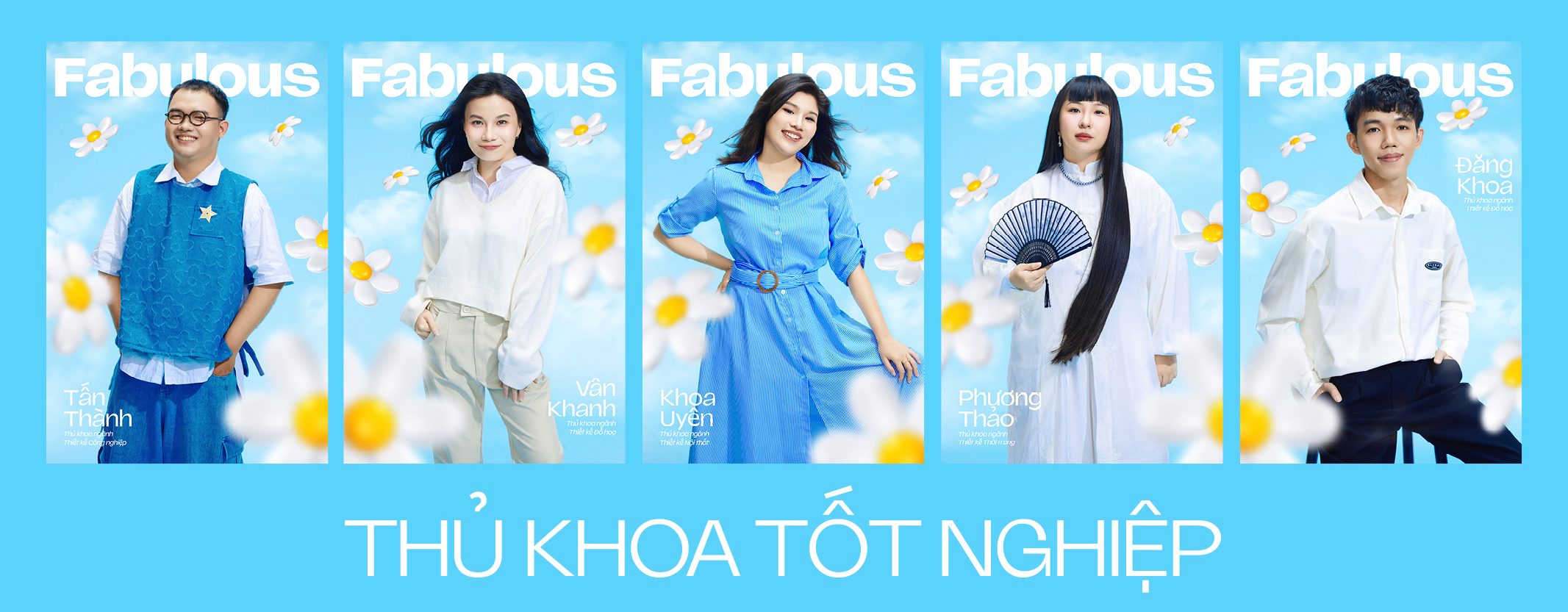FASHION DESIGN - ID COURSE: 7210404
Standard programme
4 years - Bachelor of Arts with major in Fashion Design
The course trains Fashion Designers with stylistic and creative competencies combined with the ability to define innovative products, develop stories and place a final product on the market. The different collections and the production of prototypes are the main areas of expertise provided to students throughout the four years of study.
Regarding all the different collections studied, a particular attention is paid to the acquisition of pattern-making and sewing skills, textile, leather technology and processing, design techniques, fashion illustration, the production process of garments and accessories.
Complementary to the technical and methodological disciplines is the particular focus on cultural studies that identify the language of fashion as a historical, artistic and social phenomenon, as a flow of trends and codes, as a creative and visual narrative and as an economic system featured by a production chain and by specific marketing and communication strategies. Students have the possibility to choose among different workshops (changing every year) such as hand embroidery, written analysis of trends, hand knitwear, fur.
POSSIBLE CAREERS IN FASHION DESIGN
- Fashion designer
- Stylist
- Modeler
- Patternmaker
- Fashion coordinator
- Creative Advertisement Maker
- Fashion Products Retailer
- Fashion Photography
- Beauty Products’ Online Marketing
- Social Media Marketing of Fashion and Clothing
The latest trends in fashion are in one day and out the next. For this reason, a designer must constantly anticipate future trends and be inspired by them to create their latest designs. In these courses, students learn about textiles and fabrics and how to use computer-aided design (CAD) technology. They also work on projects they can add to their portfolio, which showcases their designs.
Moreover, the programme offers a focus on specific technical drawings, the processes of production and use of different leathers and skins, as well as metal hardware design for accessories.
MODULES
| English Community 1 | Skills for sustainable development | Learning methods in university | Swimming (Compulsory) |
| National Defense Education - 3rd Course | Fundamentals of Informatics 1 | Analyzing the Natural World | History of Fine Arts |
| Drawing 1 | Introduction to drawing |
|
|
| English Community 2 | National Defense Education - 1st Course | Fundamentals of Informatics 2 | History of Design |
| Visual Fundamentals | Drawing 2 | Introduction to composition in decoration |
|
| Interdisciplinary projects Trash to treasure design, Fabric design 1, Fabric design 2, Leather 1, Leather 2, Dyeing techniques, Jewelry 1, Jewelry 2, Ceramics 1, Ceramics 2, Wood design, Advanced furniture design, Lighting devices, Event Identity Design, Traditional product and Gift, Poster Design, Editorial Design, Calendar Design, Makeup Arts | |||
| English Community 3 | National Defense Education - 2nd Course | Drawing 3 | Sewing Materials |
| Techniques of Tailoring 1 | Fashion Design Principles | Presentation techniques |
|
| Interdisciplinary projects Trash to treasure design, Fabric design 1, Fabric design 2, Leather 1, Leather 2, Dyeing techniques, Jewelry 1, Jewelry 2, Ceramics 1, Ceramics 2, Wood design, Advanced furniture design, Lighting devices, Event Identity Design, Traditional product and Gift, Poster Design, Editorial Design, Calendar Design, Makeup Arts | |||
| Design Methodology | Ergonomics – Human factors | Drawing 4 | History of Fashion |
| Techniques of Tailoring 2 | Fashion Design Software | Material Treatment |
|
| The Basic Principles of Marxism - Leninism | Teamwork Skills | Writing and Presenting Skills | Photography Techniques |
| Creativity Methodology | Techniques of Tailoring 3 | Fashion Design Studio 2 | Fashion Design Studio 1 |
| Ho Chi Minh Ideology | Introduction to Legislation | 3D Pattern Making | Fashion Design Studio 3 |
| Special Courses | Interdisciplinary projects Trash to treasure design, Fabric design 1, Fabric design 2, Leather 1, Leather 2, Dyeing techniques, Jewelry 1, Jewelry 2, Ceramics 1, Ceramics 2, Wood design, Advanced furniture design, Lighting devices, Event Identity Design, Traditional product and Gift, Poster Design, Editorial Design, Calendar Design, Makeup Arts | ||
| Graduation Internship |
| Revolutionary Way of Communist Party of Vietnam | Fashion Design Studio 4 | Fashion Design Studio 5 |
|
| Interdisciplinary projects Trash to treasure design, Fabric design 1, Fabric design 2, Leather 1, Leather 2, Dyeing techniques, Jewelry 1, Jewelry 2, Ceramics 1, Ceramics 2, Wood design, Advanced furniture design, Lighting devices, Event Identity Design, Traditional product and Gift, Poster Design, Editorial Design, Calendar Design, Makeup Arts | |||
| Professional Practice & Ethics & Portfolio | Integrated Project or Graduation Thesis |
Note:
- Students who do not pass the English program must take additional English courses depending on their ability, including preparatory English 1, 2, 3.
- Students must meet the required English output standards.
- Students take the MOS certification exam on MS.Word, Excel according to regulations.
SUBJECT INFORMATIONS
- PHOTOGRAPHY
-
Photography is a science because there are basic principles of physics that govern success. Photography is art because its beauty is subjective. This course provides students basic knowledge of photography. Students will understand the principle and use the camera, understand the use of natural and artificial light and they can create a professional looking image.
This course contains:
- Basic knowledge of camera and photography
- History of photography and composition rules
- Using the light
- Fashion photography
- Still life photography
- Landscape photography
- Editing
Credits: 2 (1.1) Theory: 15 - Practice: 30
- SEWING MATERIALS
-
This is a course that provides students with general knowledge of materials in the field of fashion design. Throughout the discipline, students can understand the diversity of the material world, the origins, and distinctions of different forms of weaving, how to recognize and distinguish fabrics.
Moreover, in this module, through the research on materials and fabrics, thus, based on the general theory and advance, students will practice to figure out new materials by using the methods of knitting, crochet, weaving, linking materials....
Credits: 3 (3.0) Theory: 45 - Self-learning: 90
- DESIGN METHODOLOGY
-
Design Methods belongs to the major fundamental course. Design Methods provides the student with the basement of design working process from the problem identify phase, planning, idea developing to prototype making and evaluation before manufacturing. Within the design developing cycle, Design Methods for Industrial design students will mainly focus on the problem investigating and identifying phase with a short project-based exercise.
After the course, students will be able to establish a detailed research plan when approaching a design-oriented problem using appropriate design research methods in order to get information to produce design decisions for the next step.
Credits: 3 (3.0) Theory: 45 - Self-learning: 60
- FASHION DESIGN STUDIO 2 - DESIGN FOR SEASON
-
This course provides students with knowledge of the garment design by climate and weather. In line with the choice of ideas to build the design system, the focus of the project is on the materials and season.
With this module, students will conduct research with the market, customers to capture consumer tastes, customer psychology, and economic ability. Researching materials suitable for the fashion season.
At the same time, this module also requires students to master the design process, select materials that suitable for the requirements of the design and update the trends of domestic and world markets.
Credits: 3 (3.0) Theory: 45 - Self-learning: 90
- FASHION DESIGN STUDIO 4 - WEDDING DRESS DESIGN
-
This course provides the student with knowledge of evening dress design and wedding dress, a part of HauteCouture Design.
With this module, students will approach the style of romantic costumes, study the history of the formation of wedding and evening dresses, the forms of wedding dress, evening gowns, traditional wedding costumes, the timeline of the development of wedding and evening dresses
This module requires the student to establish a design process of a wedding and evening gown in the following order: market research, customer research, trend research, ideas selection, sketches, prototype, final product... Students are provided with knowledge on how to structure and garment making step by step.
Credits: 3 (3.0) Theory: 45 - Self-learning: 90
- SPECIAL COURSE
-
This course is a part of the advance skills group, which focuses on the 1:2 to 1: 1 scale of 2D drafting. With this section, students will be provided with the knowledge of 2D drafting of fashion products, techniques that transform basic lines to renew costumes.
This module requires students to figure out and develop a product making process, the structure of the product on 2D before proceeding with the cutting steps.
Credits: 3 (3.0) Theory: 45 - Self-learning: 90
- TECHNIQUE OF SEWING 1
-
This subject belongs to the group of skills, providing knowledge about the process of fashion products. With this subject, students are provided with knowledge on how to operate specialized equipment, basic sewing styles, and sewing controls.
Belonging to a group of technical and a basic course in sewing technique, this subject requires students to complete their basic skills before joining the course project.
Credits: 2 (1.1) Theory: 15 - Practice: 30
- TECHNIQUE OF SEWING 3
-
This course is about the extended skill group, base on the skills course, the student learned before, provide the knowledge of the product and more clearly about the making process of garments.
With this section, student to provide the knowledge of the implementation of the information in the information in the information like fit body dress, decoupé, gown... and steps of making garment process: measurement, drafting, cutting, sewing, fitting...
This section requires students to be able to be displayed the technical display, understand and advance their skill via making product process.
Credits: 2 (1.1) Theory: 15 - Practice: 30
- Graduation Thesis
-
Graduation thesis is conceived as a loose framework within which each student’s visual method is deployed across many diverse projects during the pass courses of study. While every thesis project is unique, there are several common features: a focus on methodology, the application of a visual method to studio work, and the organization of the work in a thoughtfully argued written document. The thesis includes a theoretical dissertation, in-depth study associated with the practice of creating multiple designs based on the previous research. Students who have excellent projects can continue to study for master or the doctoral degree.
Credits: 8 (0.8) Theory: 240 - Self-learning: 240
- FASHION DESIGN PRINCIPLES
-
Fashion Design Principles belongs to the major fundamental course. This is the introductory course to fundamental elements of Fashion design major. The student will learn and experience to catch-up the terminologies, the working process, the idea arrangement and its tools, prominent figures in the field and be able to analyze what makes them great in terms of fashion design language. Throughout the course, students will be able to answer what fashion design is; to which extent a fashion designer is needed; what makes us different from other major’s designers and who we would work together as a team, etc.
Fashion Design Principles course is theory-based with consecutive in-class activities and home exercises to get learners into the understanding and atmosphere of a fashion design studio.
Credits: 3 (3.0) Theory: 45 - Self-learning: 90
- TEXTILES DESIGN AND SURFIX TREATMENT
-
This course provides students with general knowledge of surface treatment methods. Via this module, students will understand how to change the surface of the material through such methods as smocking, embroidery, ribbon embroidery, felting, tie-dye, batik,..... and how to apply it to fashion design.
The students are also introduced, updated and approached new methods of the fashion design industry in the world.
In addition, this module provides and reinforces students with aesthetic knowledge in fashion design and materials combination.
Credits: 3 (3.0) Theory: 45 - Self-learning: 90
- FASHION DESIGN STUDIO 1 - KIDWEAR
-
This course provides the students with knowledge of children's apparel, including the different categories of kidswear such as uniform, design for seasons, swimwear...
With this module, students will undertake the process of research with the market, customers to capture consumer tastes, customer psychology, and economic ability.
At the same time, this module also requires students to master the design process, choosing ideas and how to convey the idea to designs, choosing the suitable fabrics to children, controlling the process of product making and how to advertise and sell products.
Credits: 3 (3.0) Theory: 45 - Self-learning: 90
- FASHION DESIGN STUDIO 3 - UNIFORM DESIGN
-
This course provides students with knowledge of uniform design.
With this module, the student will approach a number of standardized outfit styles, researching the different styles of uniforms and some others field such as brand identity, logo design.. via uniform design
In addition, this module also requires students to master the design process, select materials that suitable for the design requirements, and update the market trends in the country and in the world.
Credits: 3 (3.0) Theory: 45 - Self-learning: 90
- FASHION DESIGN STUDIO 5 - AVANT GARDE DESIGN
-
This course provides students with the knowledge of avant-garde design another part of Haute Couture
With this module, the student will approach the avant-garde style, impressive on the catwalk, reflecting the creativity of the designer, the unexpected combination of materials and application of new material technologies in fashion.
Students are provided with knowledge on the construction of costumes: shape and volumes, including the methods how to make this kind of costume.
This module requires students to set up the costume design process in the following order: concept research, material research, trend research, sketches, prototype, final product.
Credits: 3 (3.0) Theory: 45 - Self-learning: 90
- 3D PATTERN MAKING
-
This course is a part of the extended skills group, which focuses on the 3 dimension of the product, with the new definition of fashion design, the student will approach the ways how to re-construction product without using the traditional way of tailoring. Besides that, the requirement is to figure out the form and cube of product, show off an ability and thinking of designers.
With this section, students will be provided with the knowledge of 3D pattern making of fashion products, the relationship of 2d and 3d pattern making, techniques of reconstruction.
This module requires students to figure out and develop a product making process, the structure of the product on 2D and 3D before proceeding with the cutting steps.
Credits: 3 (3.0) Theory: 45 - Self-learning: 90
- TECHNIQUE OF SEWING 2
-
This subject belongs to the extended skill group, which is based on the previous subject providing knowledge of the fashion production process. With this module, students are provided with knowledge on how to perform the various types of Europe costume such as Shirt, T-shirt, pants, short pant and the step of making garment processing such as parameters, 2D drafting, cutting, sewing, finishing.
This module requires students to demonstrate the product's presentation techniques, understand and practice the process of the product.
Credits: 2 (1.1) Theory: 15 - Practice: 30
- GRADUATION INTERNSHIP
-
Through a guided self-directed initiative, the senior student will research, propose and contact a practicing professional in an individual studio, gallery, educational institution or professional organization to search out an intern position. This actual "real world" work experience will develop networking abilities and provide the student a glimpse into the design studio or art related environment and prepare the emerging artist/designer for employment upon graduation.
Credits: 2 (2.0) Theory: 30 - Self-learning: 60
- INTEGRATED PROJECT
-
This course forms the final capstone experience of your undergraduate studies. In this, students will take the project plan and pre-production work that they have completed previously and adopt a quality framework which will lead to the publication of a final folio piece. Students will have developed a heightened understanding of the broader social, professional and cultural significance of their discipline area. Students will be expected to combine this knowledge and work towards publication of a final deliverable which is above and beyond anything they have achieved in your previous modules.
Credits: 8 (0.8) Theory: 240 - Self-learning: 240
For many artists, including fashion designers, developing a portfolio—a collection of design ideas that demonstrates their styles and abilities—is essential because employers rely heavily on a designer's portfolio in deciding whether to hire the individual. For employers, it is an opportunity to gauge talent and creativity. Students studying fashion design often have opportunities to enter their designs in student or amateur contests, helping them to develop their portfolios.
